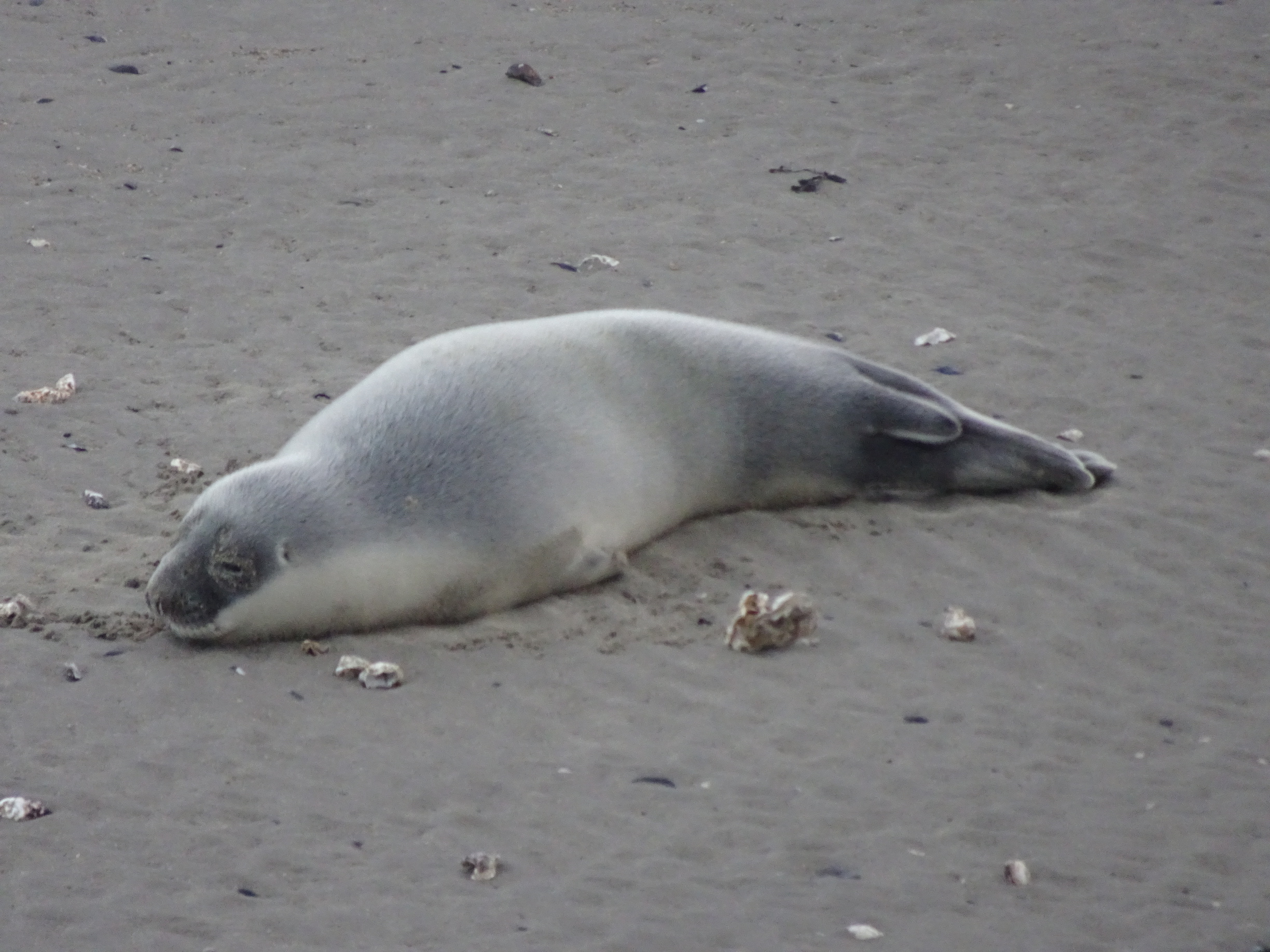Surprise visitor on Ostend beach: a young hooded seal

A young hooded seal photographed on the beach in Ostend on August 21st was the fifth documented case of this northern seal in Belgium. However, the animal was not identified until the next day. By then, it had already returned to the sea, never to be seen again. Or was it?
On Thursday evening, August 21st, a regular visitor to the Ostend beaches photographed a young seal on the eastern bank. Seals are no longer a rarity on our coast. West of the Ostend harbor channel, there's even a permanent haul-out site where both common and gray seals can be seen regularly. The observer therefore thought he had captured a young gray seal. Always a nice sighting, but no longer unusual.
Only the next day, when the photos circulated on social media, did it become clear that it was a much rarer species: a young hooded seal (Cystophora cristata), a seal from the distant, icy waters of the far north. The animal appeared healthy, but despite searches by nature lovers and specialists from the Institute of Natural Sciences, it was not found again. The direction in which the young Hooded Seal continued its journey, and whether it would reappear, was unknown at that time.

Who is the hooded seal?
Hooded seals are native to the North Atlantic and Arctic Oceans, from Spitsbergen to the east coast of Canada. The largest populations occur between Greenland and Canada, with also a significant breeding zone near the volcanic island of Jan Mayen (Norway).
Unlike our familiar common and grey seals, the hooded seal generally lives further offshore, hunting in deeper and colder waters and often inhabiting drifting pack ice. Pups are born there between March and May. Their nursing period is remarkably short, the shortest of any mammal. In just four days, the pups consume so much fat-rich mother's milk that their weight nearly doubles. Afterward, they are independent and soon cover great distances at sea.
Young animals, like the Ostend specimen, have a blue-gray back and a pale belly, leading them to be called "bluebacks." The typical hooded seal characteristic, a black skin pouch that adult males can inflate to the size of their heads, is not yet visible in young animals.

Belgian hooded seals
That someone was able to photograph a hooded seal on a Belgian beach on a summer evening shows how surprising nature can sometimes be. Why this young animal showed up in Ostend remains a mystery. It's tempting to think of changes in its northern habitat, for example due to climate change, but hard evidence is lacking. Nor can the opposite be proven.
What is certain is that this is not the first time Belgium has been visited by a hooded seal. Previous sightings date back to 1987, 1999, 2000, and 2003. The first was the most remarkable: an adult female that had swum up the Scheldt River and was first seen near Ghent, later captured near Tournai. She was housed at Antwerp Zoo and then at the Pieterburen Seal Centre (Netherlands), but died soon after. The other three cases involved young animals: a male in Heist (1999), a female in Knokke (2000), and a male in Middelkerke (2003). All were weak and were cared for by SeaLife. Only the animal from 1999 survived its southern adventure and was released back into the North Sea in January 2000.
The fact that things usually end badly for young hooded seals that appear so far south was unfortunately also illustrated by the recent specimen in Ostend. On September 1st, it reappeared, this time in Rockanje, the Netherlands. After a 24-hour observation period, it was taken to the A Seal center in Stellendam on September 2nd, where it also died.